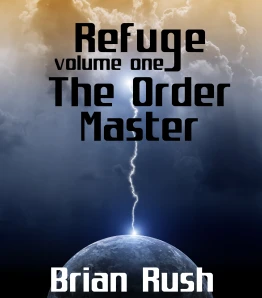 Of course, every liberal rejects supply-side economics, but most of us do that because we feel it’s unfair, hard-hearted, and generally nasty. Which it is. But if it worked — which it doesn’t — the fact that it’s unfair, hard-hearted, and generally nasty wouldn’t be reason enough to reject it.
Of course, every liberal rejects supply-side economics, but most of us do that because we feel it’s unfair, hard-hearted, and generally nasty. Which it is. But if it worked — which it doesn’t — the fact that it’s unfair, hard-hearted, and generally nasty wouldn’t be reason enough to reject it.
“This is unfair” is a politically losing argument, if it gets framed as a question of fairness versus economic utility. If supply-side economics produced a more robust, faster-growing, richer economy, but one in which the benefits went disproportionately to the rich, most people would support it. Hell, I would support it. Why not? We can always implement welfare measures to help the poor, taking advantage of all the prosperity that throwing money at rich people is supposed to produce. If it really comes down to a choice between great riches for a few and povert for everyone, who wouldn’t choose to let the rich get richer?
Well, maybe someone who thinks with his heart instead of his head. And that’s the only reason I can think of why so many liberals let the argument be framed in exactly that way. Because if they were thinking with their heads (and if they understood economics, which unfortunately most people of all political persuasions don’t), they would see that the biggest and strongest criticism applicable to supply-side economics isn’t that it’s unfair, but that it doesn’t work.
It doesn’t work. It doesn’t produce prosperity. It dampens it down. It produces sluggish economic performance and an unstable economy likely to break down under financial stresses that a healthier economy would shrug off.
The supply-side promise is that most people will get a smaller piece of a bigger pie. But the reality is that under supply-side policies, most people get a smaller slice of a smaller pie. It’s not a question of prosperity versus fairness. It’s one of prosperity and fairness — or neither.
What Is Supply-Side Economics?
The term “supply-side” is meant to draw a distinction with Keynesian economics, which emphasizes the problem of consumer demand. A Keynesian approach is to keep wages high and income broadly distributed, so as to maintain strong demand for goods and services, which strengthens sales economy-wide and prompts increased investment in enterprises that create more jobs. More jobs means more demand which means more investment and more jobs — and so on.
The downside of this is that it argues that wealth should not be allowed to concentrate too much. We can afford to have some people be richer than others, but not by so much that demand becomes depressed. It argues for such policies as a progressive tax system, high spending on public works and services, and measures to encourage unions, restrict immigration, and discourage outsourcing. This creates an incentive in some quarters to find a competing theory that allows people to become rich without restriction.
Supply-side economics is that theory. It argues that the limiting factor on investment isn’t consumer demand but capital formation and rate of return. If the rich are allowed to keep more of what their investments earn for them, they’ll have more money to invest and a bigger incentive to invest it. Hence the rationale for doing exactly the opposite of what Keynesian economics calls for in almost every situation. Instead of keeping wages high, keep them low to maximize corporate profits. Instead of a graduated tax system, have a flat one, or even one that taxes the rich hardly at all, while resting the bulk of revenue generation for the government on the middle class. This, we were told, would result in more investment and, over time, a better standard of living for everyone. There’s a surface plausibility to all this, which is why so many people bought into it whose immediate interests weren’t being served.
By now we should be aware that the promise hasn’t been met. We’ve seen real wages drop for most people, and the economy has been both slower-growing and far less stable than it was before supply-side policies were implemented in the 1980s. So we can see that it’s not working, but without understanding why it’s not working — why, in fact, it was predicted not to work long ago — there’s a tendency to screen out the data and go on believing what we think should be true, rather than what we can see is true.
It’s Not Whether They Can, But Whether They Will
The reason why supply-side economics doesn’t work is because the question is not, and has never been, whether rich people can invest in wealth-creating, job-creating ventures. It’s whether or not they will.
What I mean by a wealth-creating venture is one that produces goods or services (or both) for sale on the market. An investor with a sum of money to invest may do so by building a company, or by buying stock in a company, or otherwise funding the expansion of business to create wealth. Alternatively, he can invest in financial instruments that make money by lending money to others, or by gambling (essentially) on doing so.
Wealth creation has the potential to provide a higher return in the long run, but financial instruments are likely to pay off faster. More importantly, wealth creation pays off only if and when the goods and services produced are sold to customers. If that doesn’t happen, the investment won’t pay off well, and may end up being lost altogether.
Faced with slack consumer demand, investors are less likely to invest in wealth creation and more likely to invest in financial instruments and gambling, which produce few to no jobs and have little or no “trickle down” effect.
In a situation like that, putting more money in the hands of investors doesn’t help; it just gives them more money to gamble with. Allowing investors to keep a higher percentage of their returns doesn’t help, either, when the desired type of investment isn’t likely to produce any returns at all. Worse, it encourages investments with a quick payoff, while higher taxes encourage investments with a longer payoff term, spreading the profits out over multiple years and thus taxing them at a lower rate.
With higher demand for the goods and services that investment in wealth creation produces, more such investment will occur. This, not increasing available capital, is how to boost economic growth.
Where Does Demand Come From?
At first glance, it might not seem important how widely money is spread around. As long as someone has it, someone will spend it, right?
Not necessarily. While the very rich do spend more on consumption than poorer people do, the difference is nowhere near proportional to the difference in income. There are only so many fancy suits of clothes, second and third and fourth homes, luxury cars, and so on that any one consumer needs or even wants. Desire to consume is not infinite, and it is quite possible for one’s means to exceed one’s desires.
The more money a person makes, the lower a portion of that money is spent on consumption and the more of it is saved and invested. A million dollars will be used to buy a lot more goods and services if it is shared among twenty people who have $50,000 each than if it is held by a single millionaire.
Consumer demand is a combination of desire to buy and ability to buy. Too much concentration of wealth results in a few people whose ability exceeds their desire, and a lot of people whose desires exceed their ability. By spreading the wealth around from those who have too much to those who have too little, demand will be increased, and this will boost investment in wealth creation — just as Keynesian theory predicts.
It’s Not a Trade-Off
What this means is that supply-side economics is not just unfair, but also economically unsound. It isn’t just unfair, it also depresses economic growth and produces economic instability. It’s an idea that serves only one purpose: the desire of plutocrats to rip off the rest of us.
It’s a bill of goods that we should never have bought. If we reverse course and undo the entire line of thought that began with the Reagan years in the United States, we will have an economy that performs better and is fairer for most people.
So don’t believe anyone who suggests you have to choose between the two. You can have both.
Or you can have neither.







Not your best work. What is so wrong with thinking with your heart? The fact that it is out of “style” is the reason our world is in such a mess. I’m just saying. The rest is stuff we have heard before.
The heart is for feeling. The brain is for thinking. That’s not a matter of style but of fact.
Having no heart makes one a monster, but thinking with it makes one stupid.
Actually, that deserves a little more. Thinking with the heart is exactly what is wrong with most Republicans today. They ignore facts, disregard logic, and blind themselves to empirical reality, all in service to emotional needs. Thinking with the heart is what leads to bigotry, fanaticism, and intolerance. It’s the root of climate change denial, creationism, homophobia, and fear of immigrants and people of color.
There’s a comparable, although not nearly as serious, disease on the left, too. It leads to such follies as the anti-vaccination movement and the anti-GMO movement. It results in romanticizing indigenous cultures, and absurd ideas such as I explored somewhat in the post before this one. At worst, it leads to rejection of science and modernity in general, and clinging to a romanticized past that never existed.
Feelings and value judgments can tell us where we want to go, but not how to get there. For that, we need solid reason and rigorous attention to fact.
I think one can find potential support for growth being boosted or restricted by higher inequality. If investment is constrained by a shortage of savings, then measures to raise the savings rate could help and this might mean greater inequality. But if there is not such a constraint and investment is instead held back by a lack of consumption, then measures to reduce inequality, whether through redistribution and higher spending on public services or greater trade union power would be the way forward. The stagnation of wages of the majority especially in the US, but also in the UK in recent years have as you say held back aggregate demand and growth. Regarding thinking with the heart or the head, I think some form of union between the two can produce wisdom rather than simply cold hard logic or out of control emotion. This is something that can be promoted through practices such as meditation. Thanks for your post.
Theoretically, you’re right, but in practice there is never a shortage of investment capital economy-wide.